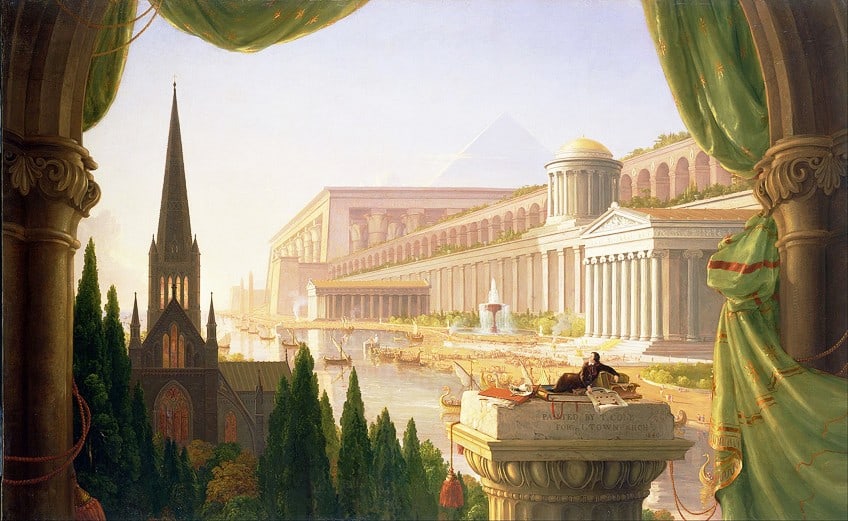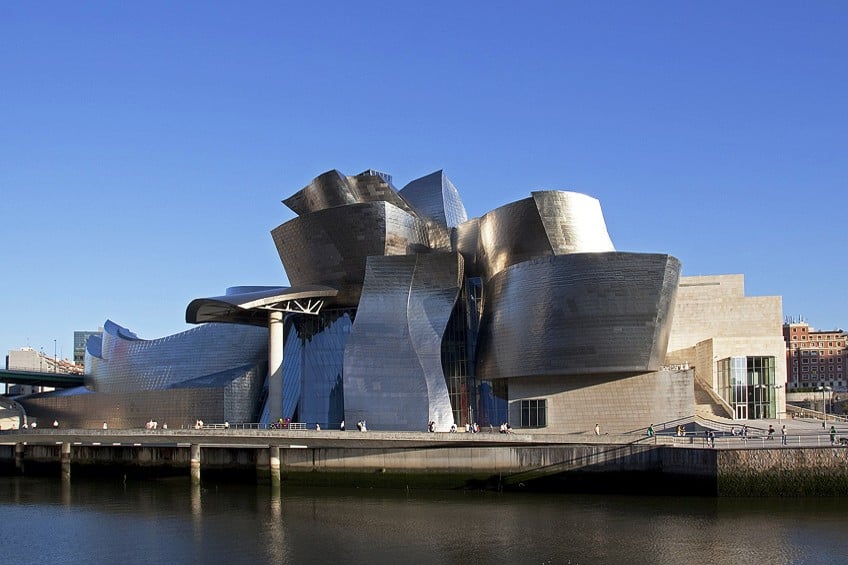Is Architecture Art? – Exploring Why Architecture Is Considered Art
Is architecture art? That is quite a loaded question, and it implies various assumptions about what does and does not count as art. So, the only way to work out this kind of question is to do the only thing that writers really know how to do, and that’s to write an article about it. If you want to know the answer to the question, “why is architecture considered art?” then you’re in the right place. Let’s discuss this fraught question.
Contents
Is Architecture Art? That Is the Question
Is architecture art? This is such a complicated question because it goes deep into metaphysical ideas about what objects within the world actually are, and these kinds of arguments can therefore become immensely irritating ones that are overly academic in tone. However, sometimes an overly academic tone is needed when delving into definitions of this variety, because we may genuinely be curious about architecture artworks and whether they really count as art or whether they’re merely something else.
Architecture itself is about the design of structures, but this is typically considered to be distinct from construction.
Many often see the planning phase as the artistic aspect and the construction as a non-creative activity that follows it. Bricklayers are not artists, but architects are. We typically view the skill levels as distinct from one another, and there has always been a distinction drawn between these disparate sides of architectural achievement. But to answer the question: “why is architecture considered art?” We may need to look a little deeper at what art is in the first place.
What Is Art?
If you wanted to find an overly pedantic question, then this question is one of the most pedantic you’ll ever find. If one were to ask someone to give examples of art, many people would likely open their responses with paintings and/or sculptures, then there may be some literature or even drama, and then some music, and only maybe then, after those more famous forms, they could say architecture and something like fashion. If you asked for art and architecture examples, someone would easily list the art forms they consider to be art forms and then move on to buildings.
So, if we need to draw a distinction between art and architecture examples for most people, then maybe art and architecture are distinct from each other.
Let’s interrogate what art is before we return to architecture. Art is fundamentally subjective and it is tied to questions of beauty and the aesthetic. Beauty is something entirely in the eye of the beholder. What one person considers beautiful, another may not. This is relatively easy to see when discussing what any person’s physical “type” is; do you like your romantic partners to be taller, shorter, broader, hairier, smoother, et cetera? None of these even encompass the human obsession with hair color or facial features like nose size, eye position, and undertone. All of these can form part of whether you see someone as beautiful.

Even in the world of art, different people may agree or disagree on whether something is beautiful art. If you adore more expressionistic images, you may dislike cubism. Regardless of whether or not you like either of these art styles, you’ll still likely view them both as art. You’ll also view them both as aesthetic.
So, we know that art can be beautiful or not based on our own perspectives, and we know that art is tied up in a culture, but we still often view architecture as entirely distinct from art.
Buildings As Functional Utilities
We see architecture as functional utilities. Buildings are places to store things, places to eat, places to sleep, and so on. Many of us will see it more as engineering than an art form. We need to have a bridge that crosses a chasm, and we need to use the right materials and the correct mathematical projections so it doesn’t fall down. That’s not art, is it?
Buildings are often seen as nothing more than large-scale tools that we use for various purposes. We actually often add art to architecture. So, if we look at architecture artworks like sculptural reliefs on the sides of walls, we’ll see that as art. But it’s not that the wall itself is art, it’s more like the relief is like a permanent painting stuck into the wall.

Look at houses, we often decorate the interiors with art because the insides are seen as otherwise bare. This also presents us with changeability. We can have more artistically inclined furniture to make a house artistic, or we can leave it as something functional. Most modern housing structures are basically rectangles with holes cut into the sides so that we can have windows and doors. This means that some may say that older forms like Baroque architecture are artistic but not regular buildings. No, they’re just functional.
What Is Functional Art?
If buildings are purely functional, then can we still ask the question: is architecture art? Of course, we can, because art can be functional. There is a form of art known as functional art, and this is art that is built with an inherent non-aesthetic function in mind. A fantastic example of this is the late South African functional artist Carrol Boyes.
Carrol Boyes did not design architecture, but she did design kitchenware. She designed spoons, bowls, cups, and saucers. She designed things that we use to eat and drink, things we use to hold flowers, or things to act as bookends. Her work made these things beautiful, ornate, and full of free-flowing feminine imagery. You can use her art to eat your dinner.
You’d likely be hard-pressed to find someone who could look at the functional art of someone like Carrol Boyes and genuinely declare that it cannot be art because of course it’s art! It’s beautiful, it’s aesthetic, and it can double as ornamentation in your house. Sure, you can eat with it, but it’s still a piece of art. So, why don’t we just classify architecture as functional art then?
Buildings As Functional Art
We come to the end of our little journey here because architecture is quite easily a form of functional art. The Ancient Romans believed that buildings needed to have three very important things: utility, strength, and beauty. The first two are purely structural in nature, but the last one is artistic. Sure, buildings have a function, and that function is often more important than their aesthetics, but the aesthetics form an integral part of the building too.
There are many architectural movements that are stunningly ornate in their presentation, like Rococo or Gothic architecture, and many would likely agree that those buildings are artistic because they’re made to be, but not regular residences.
However, residences can be made intentionally artistic, and even those that may not appear wholly artistic on the surface were still built with specific design decisions that had nothing to do with function, such as how the windows are structured, the kind of door that is used, whether arches are present, or if non-load-bearing columns are inside or outside the building.

In the Modern architectural era, we moved away from intense ornamentation, and so to many people, architecture may have lost its artistic edge, but it’s still there. It’s true that some buildings are still often classified as pieces of art in their own right, like the Guggenheim Museum Bilbao, but many would decry that example because it was designed to be a piece of art. Private buildings usually aren’t designed to be like public buildings of that variety. However, if public buildings can be made artistic then private buildings can also be artistic, and even if it doesn’t appear fundamentally artistic, they still involved explicit and implicit design decisions, many of which were not purely functional. Is architecture art? Maybe we can argue about its existence as a purely aesthetic art form, but it certainly is a form of functional art.
This marks the end of our discussion into the question: is architecture art? It’s a fraught question that many may agree or disagree with. Artistic architecture certainly does exist, but you may disagree about whether it counts as our usual conceptualization of art. However, perhaps you may be okay with the label of functional art. Maybe you’ll like that term, maybe you won’t. However, hopefully, you do see it as a rather useful term if nothing else.
Frequently Asked Questions
Can We Define Art?
Art is a highly subjective term that does not really have much of an objective basis. There have always been arguments over what does and what does not count as art, and much of that discussion boils down to forms of gatekeeping. Many want art to remain something more exclusive and elite, while others want it to be dragged down into the depths where we all reside. Is art human and fallible like ourselves, or is it something special and distinct? We’ll likely never have an answer to that question.
What Are Objectivity and Subjectivity?
These two terms are very important to understand why there are so many arguments over the definition and classification of art. In very basic terms, objectivity equals facts and subjectivity equals opinions. So, if I drop a rock, will it fall? Yes, because gravity is an objective force in the universe. Are the works of Gustav Klimt beautiful? Well, that’s up to you to decide because regardless of how much someone argues that his work is or isn’t beautiful, you may have already made your subjective decision about it.
What Is Functional Art?
Functional art is a useful bridging term. You may not agree that artistic architecture exists or that architecture is art, but you may agree that it is functional and that it entails certain artistic aspects and so, therefore, it may be deemed functional art. This is the term for something artistic that also happens to have an inherent function. So, a spoon made into a beautiful shape is both a piece of art but also something that you can use to eat soup. Hence, functional art.
Justin van Huyssteen is a writer, academic, and educator from Cape Town, South Africa. He holds a master’s degree in Theory of Literature. His primary focus in this field is the analysis of artistic objects through a number of theoretical lenses. His predominant theoretical areas of interest include narratology and critical theory in general, with a particular focus on animal studies. Other than academia, he is a novelist, game reviewer, and freelance writer. Justin’s preferred architectural movements include the more modern and postmodern types of architecture, such as Bauhaus, Art Nouveau, Art Deco, Brutalist, and Futurist varieties like sustainable architecture. Justin is working for artfilemagazine as an author and content writer since 2022. He is responsible for all blog posts about architecture.
Learn more about Justin van Huyssteen and about us.
Cite this Article
Justin, van Huyssteen, “Is Architecture Art? – Exploring Why Architecture Is Considered Art.” artfilemagazine – Your Online Art Source. April 11, 2023. URL: https://artfilemagazine.com/is-architecture-art/
van Huyssteen, J. (2023, 11 April). Is Architecture Art? – Exploring Why Architecture Is Considered Art. artfilemagazine – Your Online Art Source. https://artfilemagazine.com/is-architecture-art/
van Huyssteen, Justin. “Is Architecture Art? – Exploring Why Architecture Is Considered Art.” artfilemagazine – Your Online Art Source, April 11, 2023. https://artfilemagazine.com/is-architecture-art/.



